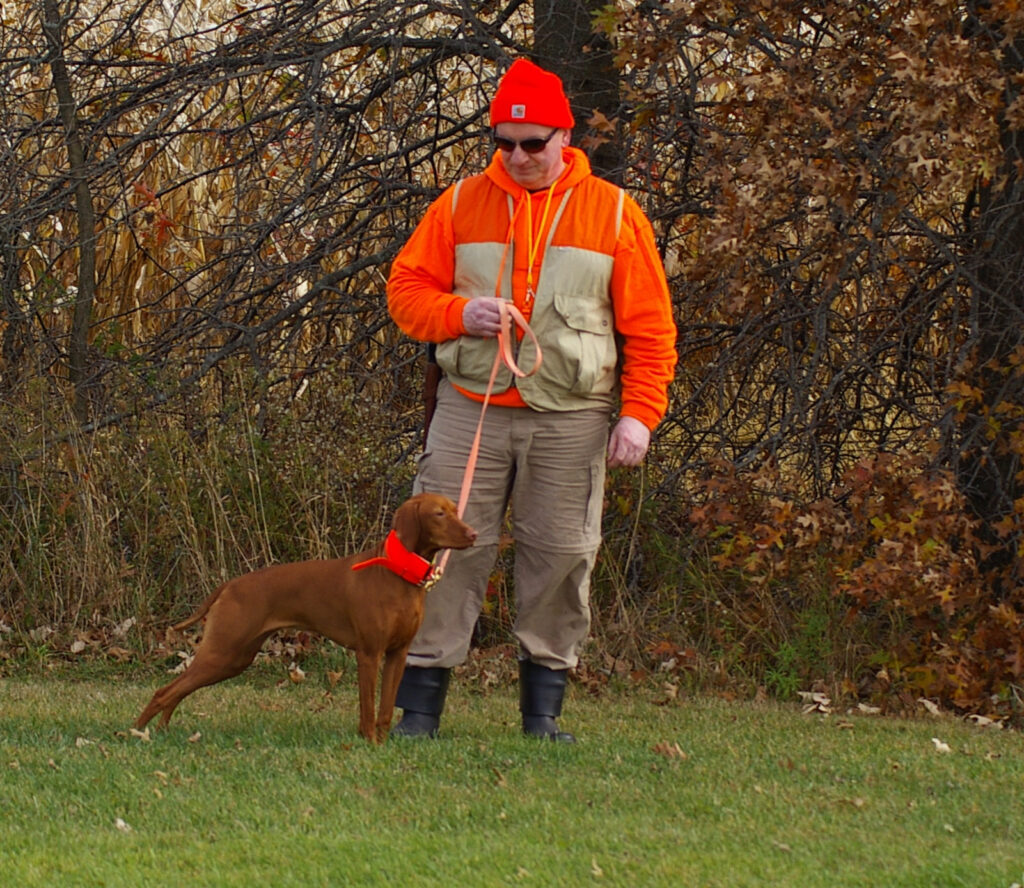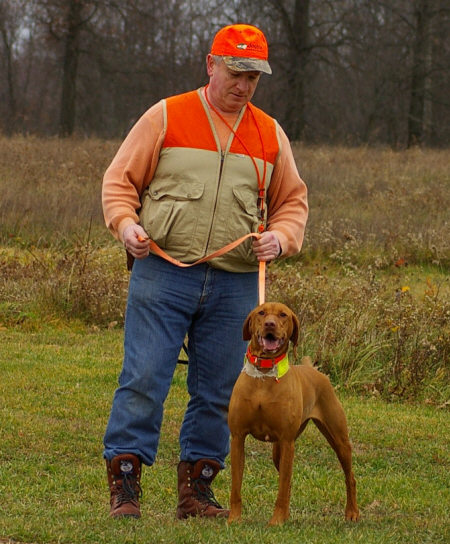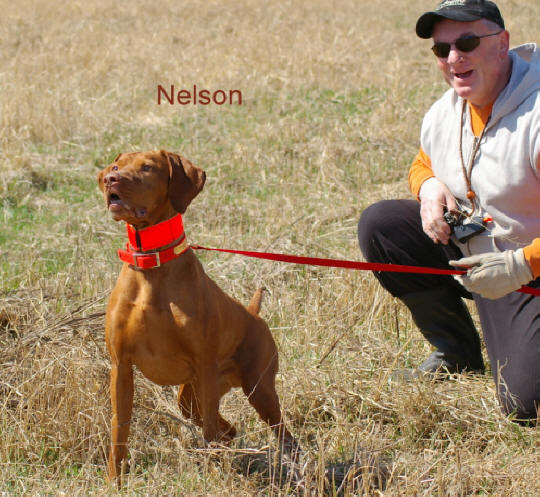
The Field Dog Jr/Junior hunter is basically an instinctive test for the dog. However, to prepare, your dog should have had exposure to birds and point them, should know the commands “Come” or “Here”, should have been exposed to gunfire, and should have run with another dog. Field Test in Canada are run with one dog alone, Hunt tests in US are run in braces-2 dogs at a time).
If possible, you should also expose your dog to horses as the judges are sometimes in Canada and most of the time in US on horseback.
The most common errors novice handlers make are:
1) Many inexperienced handlers don’t cover the bird field. Use the ENTIRE bird field, not one corner of it. If there wasn’t a bird in the area you are in the first time, there likely will not be one the second, third or fourth. I’ve seen many, many handlers THINK they know where the birds are planted, but if you do not cover the field you may end up birdless.
2) Walk at a good pace that is comfortable for you. In US, if you are braced with someone who can’t keep up or someone that goes too fast for you, the judges will split and hold you (or the other person up) if you get to the bird field too early.
3) Teach your dog to respond to a whistle. Start as a puppy, one whistle “Go” and when in the field means “Change direction”, two fast whistles “Come” Don’t nag or hack your dog all the way around the course. There is no reason to be hollering at your dog the whole time. In the case of fieldt/hunt tests, less is better.

4) If your dog finds a bird and is in full chase, don’t call it. It isn’t going to listen and your trainability score goes down. Wait until your dog has slowed or broken chase and then call your dog.
5) If your dog doesn’t know “Whoa,” don’t give the command. It makes you and the dog look stupid. So many FDJ/JH handlers are out there screaming “Whoa” at their dog as it is running full tilt after a bird. For FDJ/JH, unless your dog knows “Whoa” and does it 99% of the time, take the word out of your vocabulary!! Use the whistle.
6) Try to keep your dog away from its bracemate (and the horses). Playing and chasing is not hunting! (If you are a hunter, you know that but there are a lot of folks who have never actually hunted that do hunt tests.)
7) If your dog goes on point, hustle over to it, don’t meander over like you have all the time in the world unless you are VERY confident your dog will stay on point until you get there. Try to avoid running, just get there fast. You must be in “gun range” for the point to count according to the rule book.
8) Fire your gun if your dog has bird contact, even if it bumps the bird and doesn’t point it. Point the starter gun away from the dog and shoot to the other side. Watch, if there is a brace mate and is honoring your dog’s point make sure you are not shoot over or close to the other dog.
9) If your dog catches a bird and won’t bring it back, walk AWAY from your dog, not toward it. The dog most likely won’t want you to leave and won’t want to leave the bird, so it will pick it up and come over to you.

If you are really desperate, call your dog’s name, wave your arms, and throw yourself down in the tall grass where it can’t see you (last resort).
The last error I see is that people think if their dog found a bird and pointed it, the dog should pass. That is not the case, dogs have to pass every category that is being judged. The dog in Junior are judged in 8 categories in Canada:
Desire to hunt ,Style running , Pace, Range, Pattern , Control , Pointing, and Reaction to shot. In in USA, they are judged in four categories: Hunting, Bird Finding, Pointing, and Trainability. Judges will fail a dog that doesn’t measure up in ANY of the categories.
Last word of advice is ENJOY YOURSELF and don’t take yourself (or your dog) too seriously. Field Dog Jr/Junior hunter tests have very little pressure so just have a good time. Hunt tests are a great way to get exposed to CKC/AKC events and they are a lot of fun for you and your dog. Bring orange vest and hat.
